Trainer's Blog
News and updates from CRI’s Master Trainer, Rick Griffin
Surprise! Your Brain’s Secret Sauce for Handling the Unexpected
Published September 17, 2024 by Rick Griffin

Picture this: You’re leading a big project at work, and everything is perfectly planned out—deadlines are
set, tasks are assigned, and your team is cruising along smoothly. But then, bam! Out of nowhere, a
funding source drops a bombshell request, something completely unexpected that wasn’t in the original scope. What would you do?
While I can’t say how you would personally react, thanks to new research from UCL, I can tell you exactly what your brain is up to.
Instead of panicking, your brain kicks into high gear, thinking, “Well, that’s a curveball, but let’s roll with
it and turn this challenge into a winning opportunity!”
This is essentially what’s happening in your brain anytime when reality doesn’t match your expectations.
Two brain regions—the neocortex and the thalamus—are like the dynamic duo of staff assitants,
working together to spot these unexpected moments and make sure they don’t go unnoticed. The
researchers behind this discovery studied mice in a virtual reality environment, where they could control what the mice saw. Sometimes they’d throw in a surprise image, kind of like a donor changing their priorities, and then watch how the brain reacted.
Turns out, the brain doesn’t just register the surprise; it cranks up the volume on it. The neurons most
tuned in to these unexpected events start yelling, “Hey, everyone, check this out! Let’s make something
cool from this new stuff!” This ensures the surprise grabs the attention it deserves and sparks creativity. If you’ve attended any of my Trauma-Informed Leadership Series, you’ll recognize this as a clever survival trick that turns unexpected moments into opportunities for innovation.
But here’s where it gets really interesting (at least for neuro-nerds): your brain has a few key players that make turning surprises into golden opportunities possible. One group of neurons acts like a savvy switchboard operator, deciding exactly when to let the surprise take the spotlight. Meanwhile, another group in the thalamus either dials up the excitement or tones it down, depending on the circumstances.
Together, they’re the ultimate hype team, ensuring that unexpected events not only grab your attention
but also set the stage for you to turn them into something truly remarkable.
When we understand how the brain works, we can better anticipate our own reactions. Just as the brain
embraces unexpected events, a great leader doesn’t merely react to surprises—they seize the
opportunity to turn them into advantages. You might adjust priorities, brainstorm creative solutions with your team, or even use the unexpected challenge to highlight your team’s flexibility and innovation. Rather than derailing the project, the surprise becomes the spark that drives it to an even better outcome.
So, the next time an unexpected twist lands on your desk, remember this: your brain is wired to not just
handle surprises but to turn them into golden opportunities. Just as your brain amps up its response to
unexpected events, a great leader does the same—embracing the surprise, rallying the team, and using the challenge to fuel creativity and growth. Instead of seeing the surprise as a setback, view it as the
catalyst for innovation and progress. With this mindset, those unexpected moments won’t just be obstacles; they’ll be the driving force that propels your project to new heights.
Aha Moments in the Workplace: Tapping into Sudden Insights for Success
Published July 29, 2024 by Rick Griffin
During many of our trainings, I often ask for participants to share their “aha moments” from the neuroscience. I usually do so to foster engagement with participants, but now research says, there is a learning value to the “aha moment.”
In a recent study published in Frontiers in Behavioral Neuroscience, Professor Ekrem Dere from Ruhr University Bochum sheds light on the phenomenon of “eureka moments” – those sudden leaps in understanding that are often preceded by intentional thought processing. Dere’s study suggests that learning is not always a smooth ride but often comes in dramatic bursts. His research suggests that these learning curves can pinpoint when purposeful thinking kicks in. This revelation opens a treasure trove of opportunities for workplace training.
So, as a professional trainer committed to providing neuroscience-inspired professional development, I am writing this blog to examine how leaders can take this concept and turn it into practical strategies for workplace training programs that spark those “aha” moments.
Keep in mind that there is no one-size-fits-all approach. The strategies provided here are samples that might spark ideas suitable for your unique workplace environment. Feel free to take the parts that resonate with you and adapt them to better fit your team and objectives. The key is to be flexible and responsive to what works best for your people.
Sample Strategies
Create a playground for the mind. Sandbox spaces where employees can test wild ideas without the fear of breaking anything are key. Think of it as a digital sandbox where innovation happens in a judgment-free zone. Or set up innovation labs where the motto is “fail fast, learn faster.” Here, employees can dabble in new projects or concepts outside their usual scope.
How This Aligns
- Sandbox Environments: In these controlled settings, employees can test their ideas without the risk of causing significant disruptions. This mirrors the experimental tasks Dere mentions, where subjects are presented with challenges that do not have preconceived solutions. The freedom to explore these tasks is essential for triggering the cognitive processes leading to sudden insights.
- Innovation Labs: By setting up dedicated spaces where the primary goal is to innovate and experiment, leaders can create the perfect breeding ground for aha moments. These labs allow employees to step outside their usual scope of work and tackle new challenges, promoting the kind of conscious cognitive engagement Dere’s study emphasizes.
- Judgment-Free Zones: In a supportive environment where employees feel safe to express and test their ideas, the brain is more likely to engage in the type of active processing that precedes sudden insights. This safety net is crucial for maintaining the mental openness and curiosity that Dere identifies as key to learning in leaps.
Aligning workplace strategies with the principles outlined in Dere’s study enables leaders to enhance their training programs, fostering environments where aha moments are not just possible, but likely. This alignment ensures that employees are continuously engaged in the kind of intentional thought processing that leads to meaningful and innovative breakthroughs.
Until next time, keep those neurons firing and those aha moments coming!
Tick-Tock, It's Mouse O'clock
Published July 1, 2024 by Rick Griffin
Ever wondered how you manage to chat with friends, drive a car, and binge-watch your favorite series all while keeping track of time? Turns out, it’s not magic—it’s thanks to your brain’s sneaky little “time cells” working overtime. And guess what? In a study from researchers at the University of Utah Health have been playing with mice to crack the mystery behind these cells.
Picture this: Mice running a time-based obstacle course, sniffing out rewards like tiny cheese detectives. To earn their cheese, these mice had to master the art of timing—think of it like learning Morse code but with odors. Using some fancy brain imaging, some super smart scientists watched as these mice’s time cells fired away like a well-tuned orchestra. Initially, the cells hit the same notes for every pattern. But as the mice got the hang of the game, their time cells started dancing to different tunes for each event.
When the mice got it wrong, their time cells were all over the place, firing in chaotic sequences like a broken metronome. It was noted that during mistakes, the time cells’ activity got pretty messy, like your junk drawer at home.
Now, here’s the twist: Time cells aren’t just glorified stopwatches. These brainy scientist, found that blocking the brain region with these cells didn’t mess up the mice’s sense of time. But it did turn them into temporal dunces, unable to learn new time-based tricks. The MEC (medial entorhinal cortex) is like a sophisticated Swiss Army knife for time, not just a plain old clock.
Adding to the fun, researchers noticed that time learning and spatial learning are like two peas in a pod. The “Brainy Bunch”, suggested the MEC could be doing double duty, tracking both distance and time. Since Alzheimer’s loves to mess with this brain region first, understanding time cells might help us catch the disease before it pulls its nasty tricks.
Intrigued? Want to learn more about the science of learning? Join us at CRI’s Neuro-Learning Live Webinar on Tuesday, July 9 from 9am – 11am Pacific Time. Dive into the brainy world of learning and leave with some serious knowledge—and maybe a few laughs. See you there!
The Brain’s Curious Reaction to ‘Not Bad’
Published June 3, 2024 by Rick Griffin
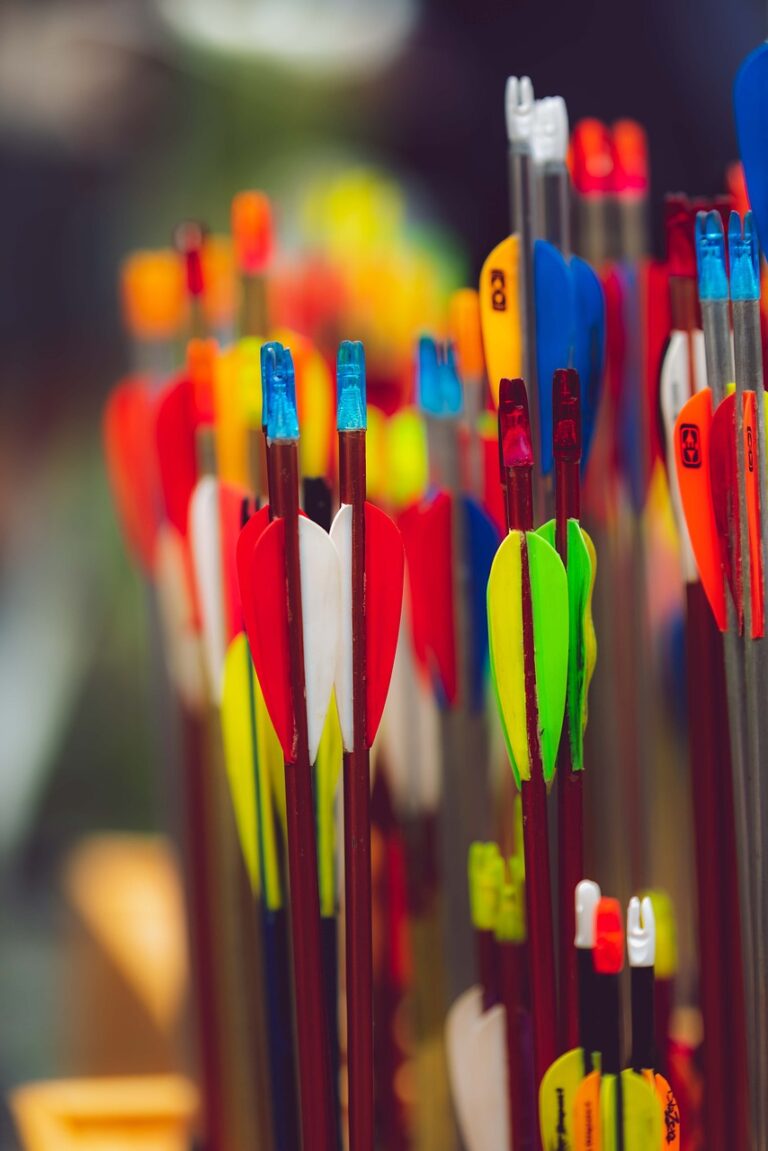
My youngest son, Torin, has recently gotten into archery. While he was launching arrows toward the
target, I said to him, “that’s not bad!” His instant reaction was a quick tilt of the head like I just spoke in Martian! It turns out that his confusion wasn’t just cute—it was actually a peek into the crazy way our brains deal with language. Scientists recently figured out some bizarre stuff about how we understand words like “not bad,” and it’s more complicated than you might think!
When we say “not” before an adjective, like “not bad,” it doesn’t just flip the meaning. Your brain
doesn’t go, “Oh, they mean ‘good’!” Nope, it’s more like, “Hmm, bad? Wait, no, less bad. Maybe okay?”
It’s a whole mental dance!
In the article, Negation Mitigates Rather Than Inverts the Neural Representations of Adjectives,
scientists at New York University, led by Arianna Zuanazzi, wanted to see what’s really going on up
there. They got 78 volunteers to read phrases like “good,” “bad,” “not good,” and “not bad,” then rate
them on a scale from “really bad” to “really good.” Guess what? People took longer to figure out the
“not” phrases, and their answers were all over the place. Surprise, surprise!
But the researchers didn’t stop there. They used a fancy tool called magnetoencephalography (try saying that three times fast) to watch brain activity while people read these phrases. Turns out, when you read “not bad,” your brain first lights up like it’s thinking “bad,” then dials it down a notch. It’s like your brain goes, “Wait, hold up, not quite so bad.”
Figuring out how our brains handle “not” helps us understand all sorts of other tricky language bits. It
shows just how amazing and complicated our thinking really is. Plus, knowing this can help us get why kids (and let’s be honest, some adults) get tripped up by phrases like “not bad.”
So next time you tell your kid, “That’s not bad,” remember their brain is doing some serious gymnastics to figure it out. This research shows just how cool and complex language is. And who knows? Maybe appreciating this can help us be a bit more patient when they give us that puzzled look.
Understanding these brainy processes can make us better at helping our kids (and ourselves) navigate the wacky world of words. And who knows? Maybe one day, when Torin hits that bullseye, I’ll say, “Not bad!” and he’ll just give me a knowing smile. Because after all, understanding “not bad” might just be the secret to hitting the target in life—just like in archery.
For more fun and fascinating brain facts, keep reading our newsletter and attend our Trauma Informed
Leadership Series.
Nudges: Naughty or Nice?
Published March 22, 2024 by Rick Griffin

Read these sentences out loud! Unless of course you are reading our website while you are in a meeting.
- By training our minds to focus on positive outcomes, we can significantly reduce stress and increase overall happiness.
- By training consistently, athletes enhance their performance and push the boundaries of what is physically possible.
- By training young learners in critical thinking skills, educators are laying the foundation for a more informed and analytical generation.
After reading those three lines, do you feel the urge to “Buy Training” from CRI, hopefully? Nobel laureates Richard Thaler and Cass Sunstein say you may have been nudged in that direction, through what they called the Nudge Theory.
Click here to read more about the Nudge Theory.
Ever caught yourself buying something from the “Frequently Bought Together” section on Amazon? Welcome to the sly world of “Nudges” – those crafty little brain elves that steer our choices when we’re not looking!
Turns out, our brains are suckers for shortcuts. Why, you ask? Well, imagine having to ponder every minor decision like it’s a UN summit – our mental gears would grind to a halt! Enter the art of nudging, which basically involves our brain’s love for the easy road, subtly shepherding our subconscious towards decisions. It’s like having a brain butler, if you will, nudging you ever so politely towards smarter choices.
But beware, not all nudges come bearing gifts. Some are more like trojan horses, dressed up to trip you into choices that serve someone else’s agenda. Here are my top picks for nudges that have caught me with my guard down:
- Subscription Snares: Those “free” trials that welcome you with open arms but turn into a labyrinth when you try to leave.
- The Supersizers: Fast food wizards casting spells to make you think, “Sure, I can handle a bit more for 99 cents!”
- Checkout Chocolates: The ultimate test of willpower, strategically placed to make you betray your shopping list at the last hurdle.
Forewarned is forearmed! Recognizing these sneaky nudges can help you dodge decisions that might lead you astray. But why let others have all the fun nudging? Craft your own nice nudges to build habits, boost productivity, or master new skills. Here’s some food for thought:
- Pillow Pages: Leave a book on your pillow as a morning reminder, nudging you into a nightly literary escape.
- Clear and Present: A clutter-free desk is your brain’s best friend, nudging you into focus with the elegance of a Zen garden.
- Thankful Thoughts: A bedside gratitude journal for daily musings sets the stage for a positively radiant mindset.
Nudges aren’t just the unseen puppeteers of our choices; they can be our secret weapons. From health-promoting policies to life-hacking apps, nudges can be the unsung heroes that subtly sculpt our world for the better.
So next time you lock eyes with that checkout chocolate, give a knowing nod to the nudges in your life. Turn them into your personal team of cheerleaders, quietly rooting for you to make choices that sparkle.
Stay curious, and until our next waltz through the wonders of the brain, keep your wits about you and your nudges friendly!
The Secret Brain Benefit of Coffee for Teamwork
Published February 3, 2024 by Rick Griffin
Need to get more out of your next brainstorming session or project team meeting? The solution may be as simple as making a coffee run first.
Research reveals that caffeine doesn’t just perk you up, it actually enhances the neurochemistry of working together. Scientists found that people who consumed coffee before a group task had more positive reviews of the team’s performance.
This brain boost from your morning brew comes from caffeine’s effects on key neurotransmitters like dopamine and norepinephrine. See, collaboration takes mental focus, motivation, and attention – all things we know caffeine improves by amping up activity in the brain’s cognitive control centers.
But caffeine also fine-tunes your social brain, the network of areas that allows us to interact and understand each other. Studies using EEG show greater synchrony between caffeine drinkers’ brain waves during group work. Their neurons are literally firing together more when analyzing, cooperating, and communicating as a team.
Coffee even reduces stress hormone levels that could otherwise lead to social withdrawal or loner tendencies when working with others. So caffeine brings your brain into greater harmony with your teammates.
So next time you want your team to click, don’t just schedule a meeting – schedule a coffee break first. That cafe stop could be the fastest route to getting brains working better together and achieving more as a group. The science says coffee just might be the ultimate social lubricant for top team performance!
The Science From Me to We
Published December 8, 2023 by Rick Griffin

In the Griffin household, where laughter and the occasional sibling squabble fill the air, my wife, Leann, and I faced a familiar parenting challenge. Our boys, Nico and Torin, are the epitome of sweetness, yet like most teens, their world often revolves around their own needs. With Christmas approaching, we pondered how to instill a sense of empathy and collective responsibility in them, without resorting to my usual lectures (that never seemed to be effective).
Then, serendipity struck. I stumbled upon Kajsa Hansson’s fascinating research on moral illusions. Hansson’s studies revealed that when people make decisions together, they’re more inclined to think of the greater good, rather than just themselves. Her study focuses on ‘moral illusions,’ likening them to how optical illusions can trick our eyes. She examines why people sometimes make selfish choices, especially when competing with others, and how they justify these choices. Hansson found that people view situations differently based on whether they win or lose. However, in group decision-making, people tend to be more selfless, challenging the belief that shared responsibility leads to less moral behavior. Her research highlights the positive impact of making decisions together.
This was the lightbulb moment! I couldn’t wait to share this with Leann. As if on cue, Leann walked in with a brilliant idea. “Why don’t we send Nico and Torin together for Christmas shopping? It’ll teach them to consider each other’s perspectives.” I said, “I was just thinking that,” to which she responded with a smirk and a jeering, “Sure you were!”
Hansson’s research could be a game-changer not just for us, but for anyone seeking to nurture empathy and collaboration in their personal or professional lives. Whether you’re a parent trying to guide your children, a leader fostering teamwork, or anyone aiming to enhance personal relationships, Hansson’s insights offer valuable lessons. I encourage you to dive into her studies. Who knows, it might just spark your next great idea or solution!
The Science of the Season: A Neuroscientific Take on Christmas Cheer
Published November 28, 2023 by Rick Griffin

While I was writing this article, my bright-eyed 12-year-old, Torin, popped by my side with his curious gaze. “What are you up to?” he asked, peeking at my screen. I turned my full attention to him and said, “I am writing a newsletter article about the neuroscientific impact of Christmas.” Suddenly his supportive gaze changed to a sardonic glare. Dripping in sarcasm he said, “Really! Only you can turn Christmas cheer into a science project!” Gotta love that kid!
Nevertheless, let’s swing into the Christmas spirit—scientifically speaking! Did you know getting into the holiday groove is actually a brain booster? That’s right, decking the halls and jingling those bells isn’t just fun; it’s good for your brain.
About a hundred years ago, sociologist Émile Durkheim coined the term “collective effervescence.” I know that sounds a little bougie, but it’s all about the buzz we feel when we’re enjoying social gatherings. Christmas is the perfect example! Research show that this festive season brings out the best in us, like being more generous and kinder. Dr. Lisa Feldman Barrett, my science superhero, would say Christmas cheer is its own special emotion.
It’s about the rituals! From munching on gingerbread to Mariah’s Christmas album on repeat, these are more than just traditions—they’re comfort food for our brains. They give us structure and zap our anxieties away. This year, my family started decking our halls super early (November 4th), and guess what? Science says it’s a mood lifter! Every twinkle light and tinsel strand is like a happy memory booster shot. After my wife’s 4th surgery on her ankle, we needed the boost.
Let’s not forget the power of the predicting brain. The sensory input from those smells of pine trees and cinnamon? They’re like time machines to happy Christmases past. Even when times are tough, these festive triggers can light up our brains with joy.
Now, celebrating might feel tricky, especially after a year of ups and downs. But here’s the thing—embracing these Christmas rituals can really lift our spirits. They remind us of the good stuff in life and tap into our reservoir of happy memories.
So, go ahead, embrace that Christmas spirit! Whether you’re hanging ornaments or trying to hit the high notes of All I Want for Christmas is You, while you are driving with the windows up (oddly specific, right?), it’s all about creating joy and cherishing the good times. I think even Torin would agree that it is cool to be a Christmas nerd!
Boost Teamwork with Theory of Mind Training
Published November 3, 2023 by Rick Griffin
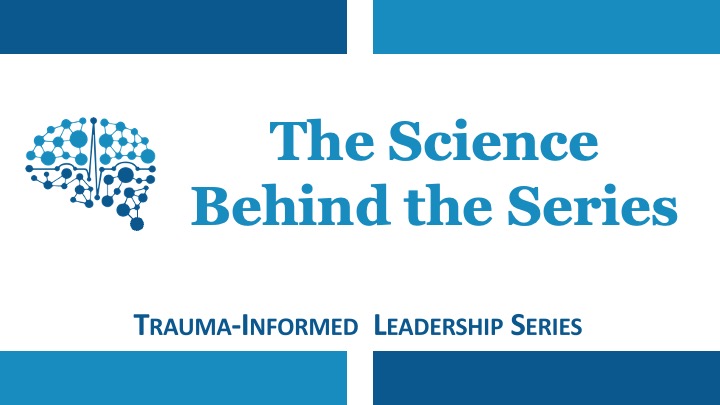
If you’re looking to enhance your leadership skills and take your team to the next level, you’ve landed on the right article. Forget conventional team-building exercises; we’re diving into something rooted in the realms of psychology and neuroscience – The Theory of Mind. A new study from the University of Birmingham, It’s not all about you: Communicative cooperation is determined by your partner’s theory of mind abilities as well as your own has shown that this unique cognitive ability could be the key to better collaboration and efficiency in the workplace.
If the term “Theory of Mind” (ToM) sounds like something out of the X Files or a sci-fi novel, rest assured – it’s very much rooted in reality. In simple terms, ToM is your ability to understand and interpret other people’s feelings, intentions, and thoughts. It’s a crucial skill for effective communication and collaboration, both of which are vital in a professional setting.
The University of Birmingham study demonstrated that adults with higher theory of mind scores were more successful when cooperating on a task with a partner. This was true even when the partners had not met before. The researchers explain that theory of mind supports conceptual alignment during communication, helping partners stay on the same page.
Unlike IQ, theory of mind is a trainable skill. I know that sounds like a cheap ploy for me to get you to attend my Trauma-Informed Leadership Series. It may very well be, however the science is clear, with targeted practice, individuals can get better at perspective taking, empathy, and social communication.
Even if you don’t attend the series, consider integrating theory of mind training into your organization’s professional development. Programs (like the Trauma-Informed Leadership Series) teaching social cognition skills have been shown to improve outcomes in areas like:
- Team collaboration
- Conflict resolution
- Negotiation
- Leadership
- Customer relations
Look for workshops focused on understanding others’ mental states. Roleplaying activities can also help employees practice adopting different viewpoints.
At your next professional development event, try theory of mind team building exercises. Shared escape rooms, improv games, and group storytelling all flex mindreading muscles.
The research is clear: supporting your team’s theory of mind strengthens cooperation. Help your employees step into each other’s shoes for enhanced coordination and synergy. When it comes to collaboration, theory of mind matters.
If you would like to learn more about the intersection of neuroscience and professional development, check out the Trauma-Informed Leadership Series.
Why Carrots and Sticks are Old News:
The Neuroscience of Employee Motivation
Published October 3, 2023 by Rick Griffin
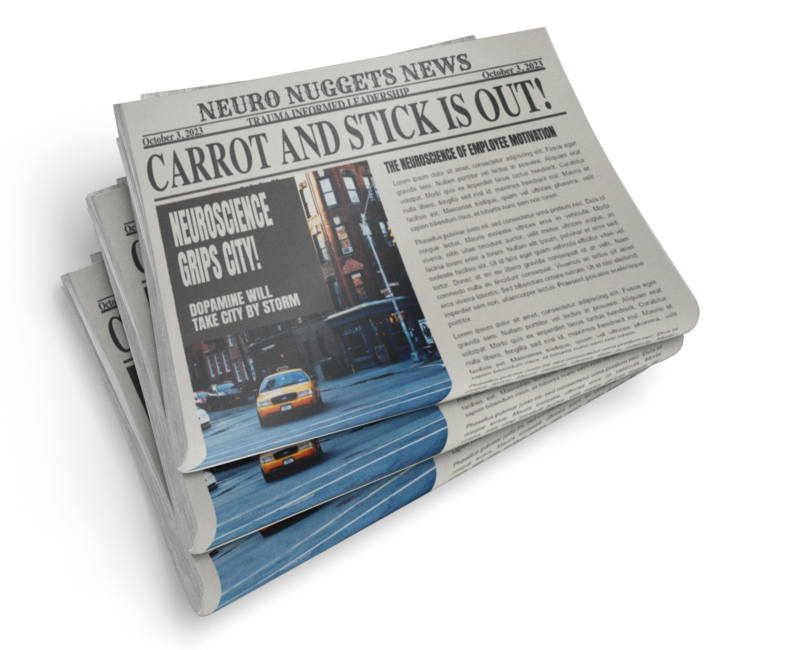
Have you ever wondered why some employees are intrinsically motivated while others need the proverbial carrot dangled in front of them? Well, grab your double espresso; we’re diving into the neuroscience of it all.
Researchers have long thought that rewards like food or money encourage learning in the brain by causing the release of the “feel-good” hormone dopamine, known to reinforce storage of new information. It’s like if your brain was a bustling office full of active employees and dopamine is the high-level manager that only shows up at the end-of-year office party—aka when external rewards like bonuses come into play. Sure, you like the Prime Rib dinner and who doesn’t like a few extra bucks in a gift envelope?
But new research out of NYU says, “Hold your neurotransmitters!” and reveals that dopamine is actually the cool boss that’s around all the time. And here’s the kicker: dopamine’s tag-team partner, acetylcholine, balances it out, even without the lure of an extra reward.
To find out more about how you and others learn, attend our Neuro-Learning Training.
You see, scientist, Anne Krok and her team from the NYU Grossman School of Medicine in their article “Intrinsic dopamine and acetylcholine dynamics in the striatum of mice” observed mice (yes, not exactly office employees but bear with me) and found out that these two hormones were doing a biochemical dance, oscillating about twice every second whether the mice were sipping water treats or not. This rhythmic ebb and flow of hormones creates a constant atmosphere for learning, not just when someone shouts, “Free donuts in the break room!”
So, what’s the memo for leaders? First, understand that your team is inherently wired to learn and adapt, even without you throwing perks their way. Sure, bonuses and promotions are great; think of them as taking advantage of an already efficient system rather than as the sole drivers of performance. Second, this opens doors for understanding how to address imbalances that may lead to workplace issues like lack of motivation, often seen in cases of depression, or even erratic behavior, like in schizophrenia.
To sum it up, we’ve been underestimating the everyday awesomeness of our brain’s internal reward system. So, the next time you’re trying to get the most out of your team, remember: dopamine and acetylcholine are already doing a tango in your employees’ brains, inspiring them to learn, adapt, and grow. Your job is to fine-tune the dance floor, not to keep not to keep changing the music. Cheers to neurotransmitter-led productivity!
From Neuroscience to Stardom:
Enhancing Performance with the Predicting Brain
Published August 28, 2023 by Rick Griffin

CRI’s Predicting Brain Model can play an invaluable role in reaching peak performance in a variety of industries. The theory the model is based on, suggests that the brain continually creates and updates a mental model of the world to anticipate future events. By leveraging this process, individuals can optimize their performance across various domains, from athletics to cognitive tasks.
For instance, my oldest son, a wannabe pro athlete, mentally rehearses a sequence of movements, thereby strengthening the brain’s predictive model of those movements. Similarly, in my role as a speaker, I visualize my presentations, promoting a more fluid delivery when the moment arrives. Over time, these predictive models can help minimize errors, enhance response times, and support the development of what seems like ‘instinctual’ skill or ‘flow.’
Whether on the field, the stage, or in day-to-day activities, the predicting brain presents a powerful method for refining skills and reaching peak performance.
A new study, from the research team from Tohoku University, offers insight into the complex interplay between our hand movements and the attention they attract. While it’s an established fact that hand movements shape our interpretation of visual inputs, this study unveils an unexpected separation between the objective of a hand movement and our internally guided, or ‘endogenous’ attention.
By adjusting hand movements and monitoring participants’ neural activity via an electroencephalogram (EEG), the researchers discovered that the visual processing of the anticipated hand location continues to take place, even when attention is directed elsewhere. This suggests that these processes are separate entities.
The research group is hopeful the knowledge from the study can be applied to creating mechanisms or strategies that enable individuals to focus their cognitive resources effectively depending on the context or situation. For individuals, this might involve cognitive, or mindfulness training strategies designed to improve concentration, reduce distractibility, and enhance the ability to switch attention effectively between tasks as needed. By harnessing these strategies, an individual’s ability to manage and direct their cognitive resources can be significantly improved. Consequently, this enhancement in cognitive control not only elevates performance across various tasks and situations but also propels individuals towards achieving excellence in their respective industries.
Given this information, how probable is it that I can persuade my son to delve into neuroscience as a means of boosting his prospects of becoming a professional athlete?
Brain Health Hack:
How a Simple Conversation Can Boost Cognitive Resilience
Published July 25, 2023 by Rick Griffin
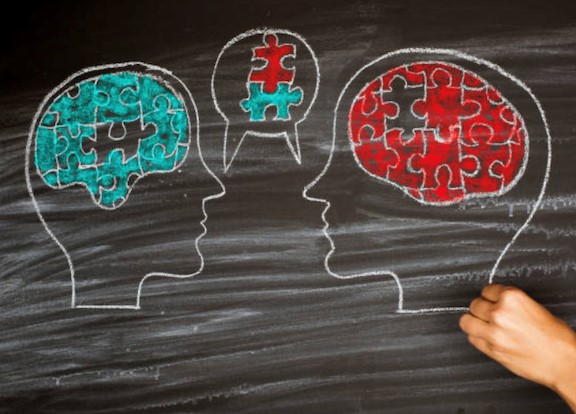
This month’s Neural Nugget blog comes from the article Association of Social Support With Brain Volume and Cognition. The researchers embarked on an intellectual odyssey to unravel the mysteries of cognitive resilience, the brain’s natural shield against the impacts of aging and diseases.
Now we are not talking about the Fountain of Youth, but this study represents a really cool brain health hack. The article says that elevating your social support is one of the best ways to turn back your brain age. That’s right folks, having someone you can count on to listen to you when you need to talk may be more crucial to brain health than you think.
What is cognitive resilience, you ask? Picture cognitive resilience as a superhero cape that our brains wear, letting them function better than expected despite the inevitable signs of physical aging or even disease-related brain changes. Many neurologists believe we can charge up this cape with mentally stimulating activities, regular exercise, and positive social interactions.
Leading the research, Dr. Joel Salinas, a distinguished neurology professor at NYU Grossman School of Medicine, describes cognitive resilience as a buffer to brain aging and diseases. With around 5 million Americans living with Alzheimer’s—a progressive disease that mainly affects those over 65 and hampers memory, language, decision-making, and independent living—the significance of this research is tremendous.
But here’s where things get really interesting: the results indicate that even people younger than 65 can benefit from evaluating their social support. For every notch of decline in brain volume, individuals in their 40s and 50s with low listener availability showed a cognitive age that was four years older compared to those with high listener availability. You heard it, simply having a dependable listener could potentially turn back your brain’s age!
“These four years can be incredibly precious. We often think about protecting our brain health when we’re much older, after we’ve already lost a lot of time to build and sustain brain-healthy habits,” warns Salinas.
So, today, right this very moment, ask yourself: do you truly have someone who listens to you in a supportive way? Extend the question to your loved ones, too. Taking this simple action could set the wheels in motion for better long-term brain health and the highest quality of life possible.
So there you have it, the science-backed excuse to have more deep, meaningful conversations! It’s not just good for the soul but potentially instrumental in ensuring your brain ages like a fine wine. It’s time to embrace our social networks and increase our cognitive resilience!
Summer Reading List:
A Selection of Great Reads
Published July 3, 2023 by Rick Griffin
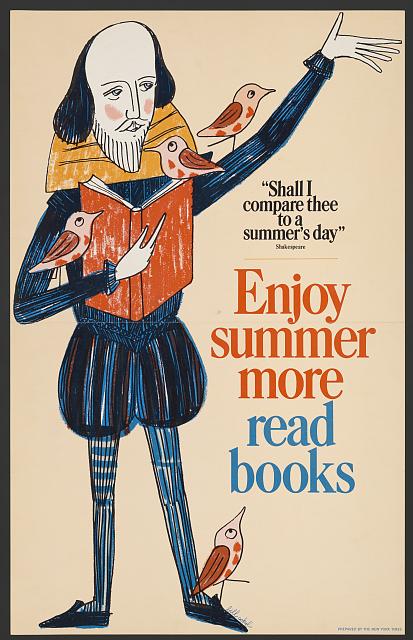
Summer can be a great time to rest, relax, and recharge. For those of you who like to relax with an excellent book, our Executive Director Rick Griffin has put together a list of blockbuster reads in the field of neuroscience.
- Hope Rising: How the science of hope can change your life by Gwinn & Hellman
- The Invisible Gorilla by Christopher Chabris
- The Molecule of More by Daniel Lieberman
- The Extended Mind by Annie Murphy Paul
- Social by Matthew D Lieberman
- On Task: How our brains get things done by David Badre
- 7 1/2 Lessons About the Brain by Lisa Feldman Barrett
- The Knowledge Illusion by Steven Sloman and Phillip Fernbach
- Livewired by David Eagleman
- The Biology of Desire by Marc Lewis
- We Are Electric by Sally Adee
- Your Brain at Work by David Rock
- Resilient by Rick Hanson
From Neuroscience to Stardom:
Enhancing Performance with the Predicting Brain
Published May 30, 2023 by Rick Griffin
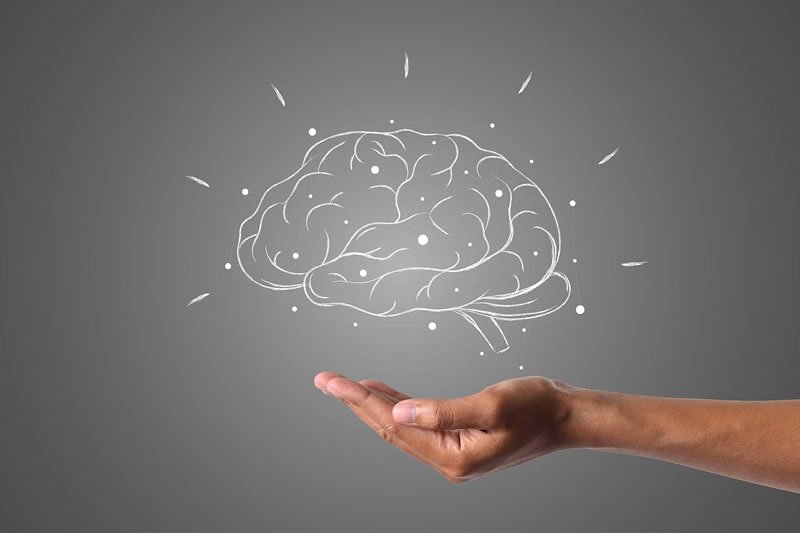
CRI’s Predicting Brain Model can play an invaluable role in reaching peak performance in a variety of industries. The theory the model is based on, suggests that the brain continually creates and updates a mental model of the world to anticipate future events. By leveraging this process, individuals can optimize their performance across various domains, from athletics to cognitive tasks. For instance, my oldest son, a wannabe pro athlete, mentally rehearses a sequence of movements, thereby strengthening the brain’s predictive model of those movements. Similarly, in my role as a speaker, I visualize my presentations, promoting a more fluid delivery when the moment arrives. Over time, these predictive models can help minimize errors, enhance response times, and support the development of what seems like ‘instinctual’ skill or ‘flow.’ Whether on the field, the stage, or in day-to-day activities, the predicting brain presents a powerful method for refining skills and reaching peak performance.
A new study, from the research team from Tohoku University, offers insight into the complex interplay between our hand movements and the attention they attract. While it’s an established fact that hand movements shape our interpretation of visual inputs, this study unveils an unexpected separation between the objective of a hand movement and our internally guided, or ‘endogenous,’ attention.
By adjusting hand movements and monitoring participants’ neural activity via an electroencephalogram (EEG), the researchers discovered that the visual processing of the anticipated hand location continues to take place, even when attention is directed elsewhere. This suggests that these processes are separate entities.
The research group is hopeful the knowledge from the study can be applied to creating mechanisms or strategies that enable individuals to focus their cognitive resources effectively depending on the context or situation.
For individuals, this might involve cognitive, or mindfulness training strategies designed to improve concentration, reduce distractibility, and enhance the ability to switch attention effectively between tasks as needed. By harnessing these strategies, an individual’s ability to manage and direct their cognitive resources can be significantly improved. Consequently, this enhancement in cognitive control not only elevates performance across various tasks and situations but also propels individuals towards achieving excellence in their respective industries.
Given this information, how probable is it that I can persuade my son to delve into neuroscience as a means of boosting his prospects of becoming a professional athlete?
The Science Behind Intuitive Decision-Making
Published April 26, 2023 by Rick Griffin

Are you ready to unlock the secrets of your intuition and make better, more informed decisions in your personal and professional life? If so, it’s time to dive into the fascinating science of intuitive decision-making.
Intuition is a powerful and often mysterious force that can guide our decisions in life, from simple choices to complex problems. While some may dismiss it as a mere gut feeling, the latest scientific research is showing that intuition is a complex process that involves both conscious and unconscious mental processing, emotional processing, and expertise in a particular domain.
Understanding the science behind intuitive decision-making can not only help us tap into this powerful tool but also shed light on how our brains work and how we can optimize our decision-making processes.
A while back, I was driving home on the freeway at the tail end of rush hour. I was a bit impatient with the slow-moving traffic, so I was driving mostly in a faster far left lane. Out of the blue, I had a strange feeling in my gut, telling me to slow down and move to the far-right lane.
I was confused by the visceral vibe but decided to follow the feeling. Suddenly, there was a loud crash, and I watched in horror as a chain reaction of cars collided in the fast lane, causing a massive pileup. Although the damage looked minor to all the vehicles involved, If I had not moved to the slower lane, I might have been caught up in the accident.
Feeling relieved and thankful, I saw the first two cars that appeared to have initiated the multiple fender benders. In that moment, I realized that I had seen one of the cars just minutes before. When the car had passed me, I noticed the car zipping erratically in out of traffic.
Subconsciously, my brain must have observed the car and registered a possible threat, then mechanisms throughout my body received the message and activated a desire within to slow down and veer away from the lane the car was driving in.
According to the research, that is exactly how intuition works. Dr. Lisa Feldman Barrett suggests that intuition is the brain using its predictive capacity to make decisions. In her book How Emotions are Made, Barrett says that intuition arises from our ability to make rapid and often unconscious predictions about the world based on our previous experiences and emotional context. These predictions inform our “gut feelings” and guide our intuitive decision-making processes. For example, if we are in a situation that is similar to one we have experienced in the past, our brain may use the emotions associated with that previous experience to guide our current decision-making.
This concept is at the core of the predicting process framework and central to Community Resilience Initiative (CRI) training courses. An overview of the predicting brain can be found in our Trauma-Informed Certification Course and in our Trauma-Informed Leadership I Course.
Is the Brain Lazy or Efficient?
Published March 30, 2023 by Rick Griffin

My son Torin has a habit of not closing cabinets and drawers. One day, I came into the kitchen after he had made himself a snack and noticed several drawers open. In my best father knows best voice, I said, stop being lazy and take the extra second it takes to close the drawers. Without missing a beat, Torin said, “Dad, I am not lazy, I am efficient.” He went on to rationalize his statement by saying, “If I want more chips, I don’t have to waste time by opening the drawer again.”
Taking a page from our training, I chose to become curious instead of furious. Okay, I was a little furious, but mostly curious. I was curious about the content of an amazing piece of research I recently came across. Although, the research was about the neural mechanisms underlying the processing of visual information, it was clear that the brain and my son have something in common. There is a fine line between lazy and efficient!
The article “Pseudosparse neural coding in the visual system of primates” published in Nature Communications Biology describes a study that investigated how the brain codes visual information. The researchers, Sidney R. Lehky, Keiji Tanaka, and Anne B. Sereno, focused on the primary visual cortex (V1) in macaque monkeys and used electrophysiology to record the activity of individual neurons.
The study found that the coding of visual information in the brain is not strictly sparse, meaning that not all neurons respond to every stimulus, as previously believed. Instead, the coding is “pseudosparse,” which means that while many neurons are selective to a particular stimulus, they are not completely silent to other stimuli. This suggests that the brain uses a more efficient coding strategy than previously thought, where a larger number of neurons can respond to a wider range of stimuli.
In lay person’s terms, this means that in the dark, our eyes do not need to see in high definition because the rods are activated instead of the cones. The rods are optimized for sensitivity to light rather than for high resolution and color accuracy. This is why we may see objects as blurry or monochromatic in low light conditions. However, our eyes are still able to detect movement and shapes, allowing us to navigate in the dark.
This study provides new insights into how the brain conserves energy in coding visual information. It has important implications for the development of artificial intelligence and machine learning algorithms that seek to mimic the brain’s processing strategies. It also helps pretentious parents understand their offspring’s commitment to conserving energy.
How do we keep concepts in our minds?
Published February 27, 2023 by Rick Griffin

The concept of a piano is not just represented in our brain when we see or interact with an actual piano. It also arises in the brain when we read, say, or hear the word “piano”. This is because our brain is organized in a way that allows us to represent objects, ideas, and concepts in a flexible and abstract manner.
When we are exposed to a word like “piano,” the visual information from the word is processed in the primary visual cortex located in the occipital lobe, just like when we see an actual piano. However, this visual information is then processed by other brain regions, including the temporal lobe, which is involved in language processing and semantic memory. This region of the brain is responsible for representing concepts, such as the concept of a piano, in an abstract and flexible way.
When we read or hear the word “piano,” our brain activates a network of neurons that are associated with this concept. This network is made up of many different brain regions that are involved in different aspects of piano-related experiences, such as hearing piano music, seeing someone play the piano, or even just thinking about pianos. This network of neurons is activated by the word “piano” because the brain has learned to associate the word with the concept through prior experiences and learning.
This ability of the brain to represent concepts in a flexible and abstract way is crucial for many cognitive processes, such as language, memory, and problem-solving. It allows us to think and communicate about objects and ideas even when they are not physically present in our environment. In the case of pianos, it allows us to recognize and talk about pianos even when we are not looking at or interacting with one directly.


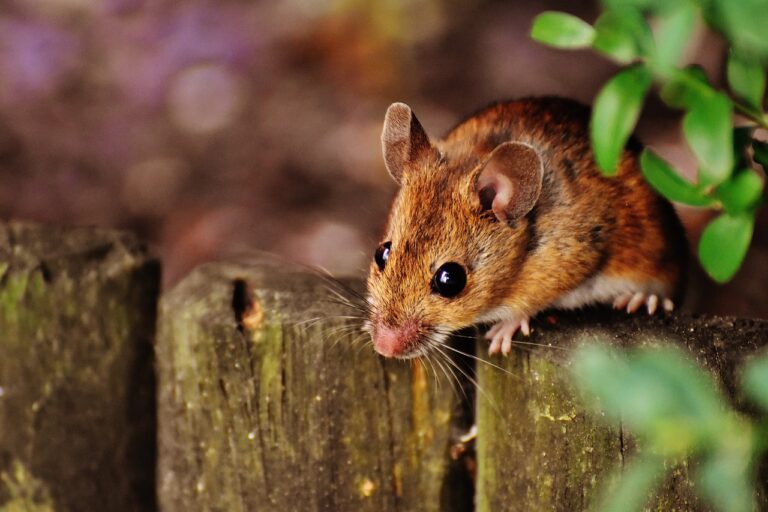
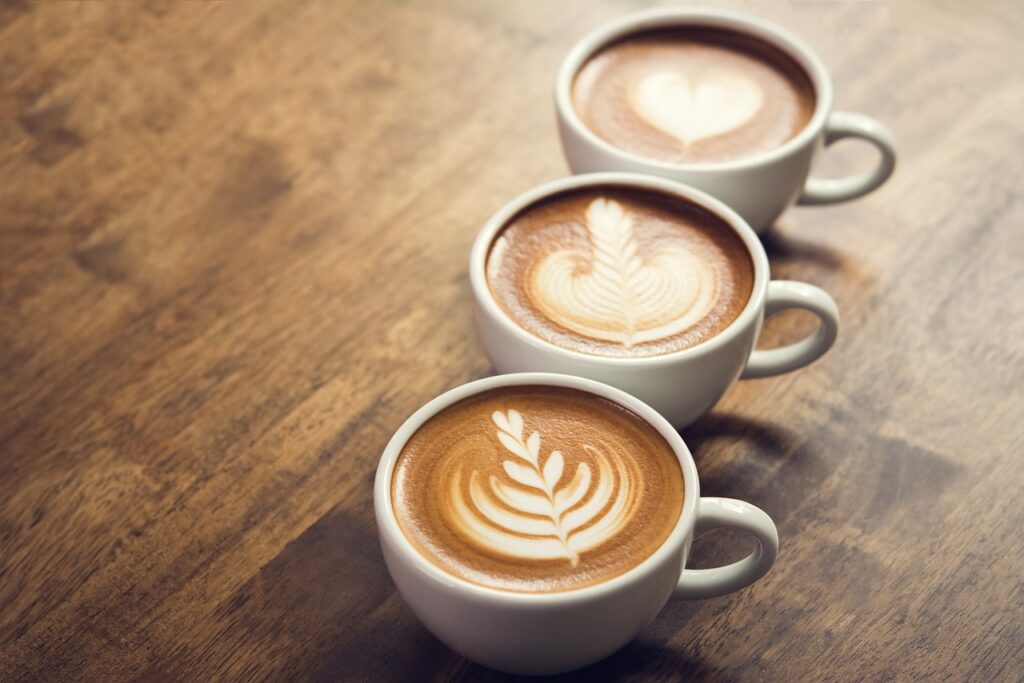
Thank you for this blog, Rick! You know that every time you mentioned some thing about sensory processing, that you are going to catch my attention as an occupational therapist who works with and trains about the importance of understanding all of the sensory systems! You always have a way of bringing intricate concepts into understandable language!
I love all of these articles and blogs, what great information, really fascinating and thought-provoking! Thanks so much for sharing this information!